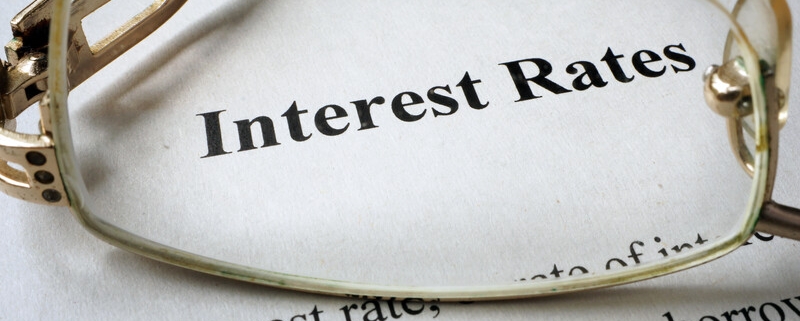Commercial real estate investors, owners and occupiers all have been monitoring whether the Federal Reserve will impose interest-rate cuts in 2024 after rapidly rising rates have substantially increased the cost of doing business.
Earlier this month, the Fed signaled it needed to see more progress toward its inflation target of 2% and decided to maintain its key lending rate. At that meeting, Fed Chairman Jerome Powell said gaining greater confidence around inflation “will take longer than previously expected,” although he also said he felt inflation would move back down in 2024.
For executives in commercial real estate, waiting for those rate cuts may prolong the uncertainty being felt in the market today.
Mark Roberts, managing director of research at Dallas-based real estate investment and development firm Crow Holdings, said the underpinnings of why the Fed hasn’t cut interest rates — a strong economy and labor market — are actually good fundamentals for commercial real estate.
He added that for many buyers and sellers of real estate, a reset to the new rate environment has already begun, noting that values are down on average 22% in the past seven quarters. That’s unlocked some deal momentum, but cumulative transaction volume in the first quarter of this year was still at its lowest level since 2013, according to Altus Group. It estimated $31.6 billion transacted across major property types in the U.S. in the first three months of the year, down 28% compared to the same quarter last year.
“The other side of the coin is, what does it mean for those who utilize a lot of leverage in their investments?” Roberts said. “For leveraged buyers, it’s not necessarily the best time, and that’s why a lot of dry powder is stacking up.”
Others in commercial real estate echoed that sentiment, saying there’s a lot of capital sitting on the sidelines that hasn’t yet been deployed — waiting, in large part, for more certainty in the broader U.S. economy.
At the end of 2023, when the 10-year Treasury rate had dropped to below 4% and borrowing rates began to stabilize, there was a greater sense of optimism that that capital raised would be put to work sometime this year, said Andrew Alperstein, partner at PricewaterhouseCoopers LLP’s financial markets and real estate group. But a stronger-than-expected economy this spring has dampened some of the optimism around any forthcoming rate cuts.
Still, even if cuts were to occur later or are more modest than previously expected, Alperstein said most real estate principals have accepted that a sub-3% environment isn’t coming back anytime soon and have begun re-pricing within the new market conditions.
“There’s a reality that has set in that rates are going to be at least moderately higher for a period of time, and investors will hopefully move forward on that premise,” Alperstein said. “What we’ve also seen is that sellers have not really been wanting to sell unless they had to. Folks have been watching closely for evidence of distress sales and forced sales — and yes, we’ve seen some, but not as many as people probably thought. We’ve got an interesting couple of quarters ahead.”
Buyers right now are generally motivated because of equity that’s available, Alperstein said. And more borrowers may be forced to make decisions on their CRE-backed loans if a higher-than-longer rate environment persists.
But more deals in general will mean broader confidence in the market on what the new norm is in returns and values, Alperstein said.
“That will hopefully be a positive thing,” he said. “I think we hoped we’d get this sooner, but some of the uncertainty around rate cuts and the increase in the 10-year [Treasury rate] has slowed that progress.”
Ripple effect on leasing decisions
Although a delay in interest-rate cuts arguably has the most direct impact on commercial real estate buying and selling, it’s also factoring into how companies think about their real estate leasing decisions.
Rob Kane, senior executive vice president and co-leader of Dallas-based Lincoln Property Co.’s corporate advisory and solutions group, said the cost of capital and interest rates ripple through most every significant decision among the occupiers with which his firm works.
“If rates are higher for longer, it means continued uncertainty around decision making,” Kane said. “Internally, it means their business is more expensive to run, and I think we’re seeing, in certain cases, a lot of focus on capital containment and preservation. It’s very difficult for a [chief financial officer] to make a long-term decision when they have uncertainty around long-term rates.”
The past four years have been marked by uncertainty around real estate decisions by companies large and small, with many opting to sign short-term renewals as they figure out how much space they need in a post-pandemic world that embraces hybrid work. Some of that uncertainty has begun to ease, with a greater number of office tenants signing longer deals and relocating to newer towers, but a higher-for-longer rate environment may mean other companies will continue to prolong more-permanent space decisions.
It’s become common for companies to take less square footage in higher-quality office buildings, Kane said. He added that while some tenants will opt to delay their decision-making in an effort to cull spending during a higher-for-longer market, others will try to seize opportunity now.
“There are a significant number of companies … that will be able to make decisions and are going through the process to take advantage of the volatility to trade into higher-quality assets,” Kane said. “I think you’re going to continue to see that playing out across the country.”
That, in turn, will have wide-ranging effects on lenders and owners, Kane said, including accelerating the amount of distress facing lower-quality properties, which tenants are leaving in favor of newer buildings.
Impact on new construction
Since the Fed began increasing interest rates in 2022, new construction across major commercial real estate sectors has slowed.
Industrial construction starts dropped for the sixth consecutive quarter, to less than 40 million square feet breaking ground in Q1. For 2024, CBRE Group Inc. previously forecast that multifamily starts would fall by 45% this year from their pre-pandemic average and by 70% from their 2022 peak.
Office, the most challenged commercial real estate sector, has seen new-construction groundbreakings decline for five consecutive quarters, according to Jones Lang LaSalle Inc. In Q1, JLL recorded less than 300,000 square feet of office construction starts, the lowest total in nearly 40 years of data.
As the cost of financing remains higher than where it’s been recently, and traditional CRE lenders remain more tepid in their lending to the sector, that’ll continue to dampen the future pipeline for most property types, including traditionally hot ones like multifamily and industrial.
“The returns that developers need to target are just not going to be achievable with the cost of financing and the cost of construction and the availability of financing,” Alperstein said. “As we look out 24 months, there’s going to be a window of time there where there will be very little new supply hitting the market, and that will most likely be positive for the fundamentals of multifamily, industrial and even some retail.”
Roberts said persistently higher interest rates will mean the next real estate cycle will shift into a new equilibrium in supply and demand, where structural occupancy rates will be higher than where they’ve been in recent years,
In industrial real estate, for example, the long-term occupancy rate in the past 20 years has hovered about 93%, but the long-term average will start to move higher, closer to 97%, Roberts said. That overall is a good thing, to sustain the warehouse market’s investment environment, he added.
Some owners and developers will continue to turn to new or alternative financing mechanisms to get deals done — including new construction, experts say.
“There is capital out there for creative financing,” said Brent Maier, real estate advisory leader at Baker Tilly. “It comes down to relationships and the appetite for cost. If you go to a nontraditional lender, sometimes that money can be more expensive, but if you have a good asset or a good deal, it generally pencils out if it is attractive.”
Source: SFBJ



